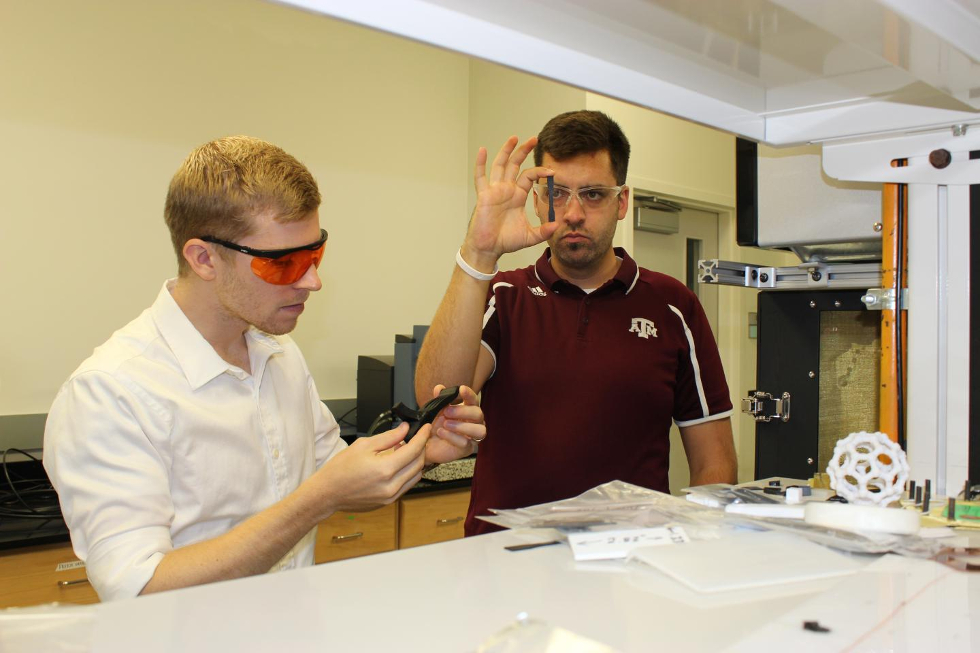
3D printing is often used in the prototyping stage of a design project, and those parts can be fragile and of little utility. Now, a doctoral student in the Department of Materials Science and Engineering at Texas A&M University believes he has pioneered a countermeasure to transform the landscape of 3D printing today.
Brandon Sweeney and his advisor Dr Micah Green discovered a way to make 3D printed parts stronger and more applicable to real-world applications. Sweeney and Green applied the traditional welding concepts to bond the submillimetre layers in a 3D printed part together, while in a microwave.
3D printed layers are prone to fracturing, causing issues with the durability and reliability of the part when used in a real-world application, for example a custom printed medical device.
"I knew that nearly the entire industry was facing this problem," Sweeney said. "Currently, prototype parts can be 3D printed to see if something will fit in a certain design, but they cannot actually be used for a purpose beyond that."
Green had previously collaborated with Dr Mohammad Saed, assistant professor in the electrical and computer engineering department at Texas Tech, on a project to detect carbon nanotubes using microwaves. Along with Sweeney, they nurtured an idea to use carbon nanotubes in 3D printed parts, coupled with microwave energy to weld the layers of parts together.
"The basic idea is that a 3D part cannot simply be stuck into an oven to weld it together because it is plastic and will melt," Sweeney said. "We realised that we needed to borrow from the concepts that are traditionally used for welding parts together where you'd use a point source of heat, like a torch or a TIG welder to join the interface of the parts together. You're not melting the entire part, just putting the heat where you need it."
Since the layers making up the 3D printed parts are so tiny, special materials are utilised to control where the heat hits and bonds the layers together.
"What we do is take 3D printer filament and put a thin layer of our material, a carbon nanotube composite, on the outside," Sweeney said. "When you print the parts out, that thin layer gets embedded at the interfaces of all the plastic strands. Then we stick it in a microwave, we use a bit more of a sophisticated microwave oven in this research, and monitor the temperature with an infrared camera."
The technology is patent-pending and licensed with a local company, Essentium Materials. The materials are produced in-house, where they also design the printer technology to incorporate the electromagnetic welding process into the 3D printer itself. While the part is being printed, they are welding it at the same time. They are currently in beta mode, but this is claimed to have the potential to be on every industrial and consumer 3D printer where strong parts are needed.
"If you're an engineer and if you actually care about the mechanical properties of what you're making, then this ideally would be on every printer in that category," Sweeney said.
The team recently published a paper "Welding of 3D Printed Carbon Nanotube-Polymer Composites by Locally Induced Microwave Heating," in Science Advances.




April 1886: the Brunkebergs tunnel
First ever example of a ground source heat pump?